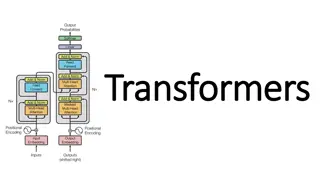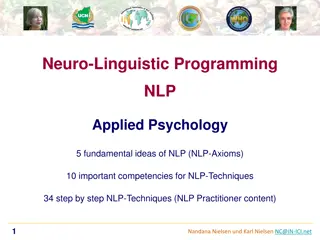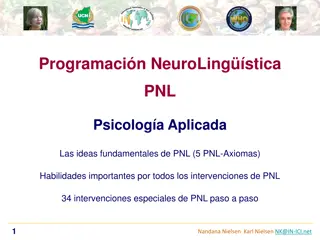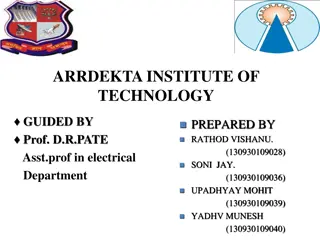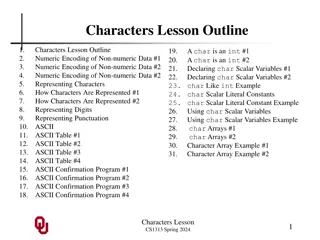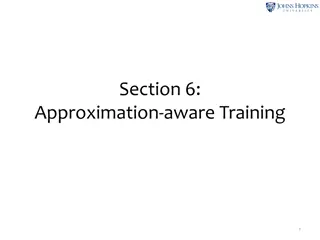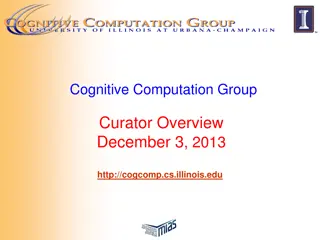Understanding Positional Encoding in Transformers for Deep Learning in NLP
This presentation delves into the significance and methods of implementing positional encoding in Transformers for natural language processing tasks. It discusses the challenges faced by recurrent networks, introduces approaches like linear position assignment and sinusoidal/cosinusoidal positional embedding, and provides insights on visualizing encodings. The content concludes by exploring the rationale behind adding embeddings, the use of sinusoids, and addresses pertinent questions on the topic.
Download Presentation

Please find below an Image/Link to download the presentation.
The content on the website is provided AS IS for your information and personal use only. It may not be sold, licensed, or shared on other websites without obtaining consent from the author. Download presentation by click this link. If you encounter any issues during the download, it is possible that the publisher has removed the file from their server.
E N D
Presentation Transcript
Positional Encoding (in Transformers) Rasoul Akhavan Mahdavi CS886-002: Deep Learning for NLP
Motivation Approaches Positional Embedding Discussion Outline Conclusion
Motivation Recurrent Networks have an inherent notion of order, but transformers don t!
Motivation Words flow simultaneously through the encoder/decoder stacks
Approaches? Linear Position Assignment (1,2,3, ) Unseen sentence lengths cannot be interpreted Floats in a range ([0,1]) Different meaning dependent on sentence size 0.571 0 0 0.66 0.285 0.857 0.142 1 0.428 0.33 0.714 1 I love many things but not this course I love this course
Properties Unique positional encoding for each time step Reasonable notion of relative distance Independent of sentence size Deterministic
Sinusoidal/Cosinusoidal Positional Embedding Position will be a vector (instead of number)
Rough Proof ? ? ?. ?? = ??+? sin(???) cos(???) = sin(??(? + ?)) ?. cos(??(? + ?)) No t involved cos(???) sin(???) sin(???) cos(???) ? =
Visualizing Encodings Consistent Relative Distance position position
Discussion Embedding is added. Why add instead of concatenate? Does is last throughout the layers? Why sinuses and cosines?
Conclusion Why positional embedding is needed Drawbacks of simple approaches Sinusoidal/Cosinusoidal Positional Embedding
References https://kazemnejad.com/blog/transformer_architecture_positional_encoding/ https://timodenk.com/blog/linear-relationships-in-the-transformers-positional-encoding/ https://jalammar.github.io/illustrated-transformer/ https://jalammar.github.io/visualizing-neural-machine-translation-mechanics-of-seq2seq-models-with-attention/ https://github.com/tensorflow/tensor2tensor/issues/1591 https://www.reddit.com/r/MachineLearning/comments/cttefo/d_positional_encoding_in_transformer/ Thank you! Questions?







